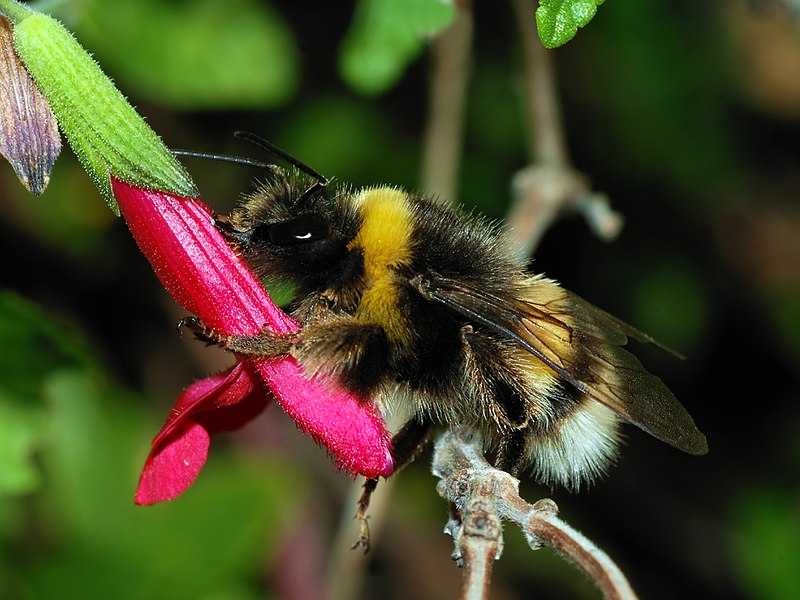
Worker buff-tailed bumblebee (Bombus terrestris)
Bee species cover the spectrum of sociality: there are solitary bees, there are eusocial bees – which are divided into facultative eusocial (the ones that can be either solitary or eusocial depending on external cues) and obligate eusocial bees, and there complex eusocial bees – i.e., the huge swarms of bees often called “super-organisms”. Yet despite such large variability in sociality, bees all still share one common trait: they pollinate flowering plants. This combination of phenotypic variability in sociality and lack of variability in other traits makes bees an excellent model for studying the evolution of sociality.
To better understand the evolution of sociality in bees, a recent report published in Science investigated the genomes of 10 bees that span the spectrum of sociality and represented multiple independent transitions to eusociality.
Theory predicts that the evolution of simple eusociality involves increased regulatory flexibility of ancestral gene networks to create specialized reproductive and non-reproductive individuals, and the evolution of complex eusociality requires genetic novelty to coordinate emergent properties of group dynamics
First, the authors found that the transitions to eusociality are accompanied by drastic changes in the “capacity for gene regulation”. Specifically, they found: i) an enrichment of positive correlations between sociality and the number of potential transcription factor binding sites (i.e., “motifs”) in promoters, ii) a positive correlation between sociality and the number of genes that are predicted to be methylated – a genomic alteration that can influence gene regulation (they empirically confirmed their bioinformatic predictions using reduced-representation bisulfite sequencing), and iii) rapid evolution of gene regulatory genes in eusocial species.
Next, they examined if the independent transitions to different types of eusociality (facultative, obligate, complex) had different evolutionary origins or if they were all due to changes in the same genes and pathways. Here, they found one common thread: gains in transcription factor (TF) binding sites near genes that evolve slower with increasing complexity.
“This suggests that a shared feature of both independent origins and elaborations of eusociality is increasingly constrained protein evolution with increasing potential for novel gene expression patterns.”
But they also found that the underlying TFs were different for each evolutionary transition to eusociality. This means that there is “no single road map to eusociality”.
Lastly, they found that gene families (and networks) underwent rapid expansion in the transition to complex eusociality – although, again, these genes were rarely the same across independent transitions.
“This suggests that if it were possible to “replay life’s tape” [SJ Gould, “Wonderful Life”, 1989], eusociality may arise through different mechanisms each time, but would likely always involve an increase in the complexity of gene networks.”
REFERENCE:
Kapheim, Pan, et al. (2015). Genomic signatures of evolutionary transitions from solitary to group living, Science, doi: 10.1126/science.aaa4788
